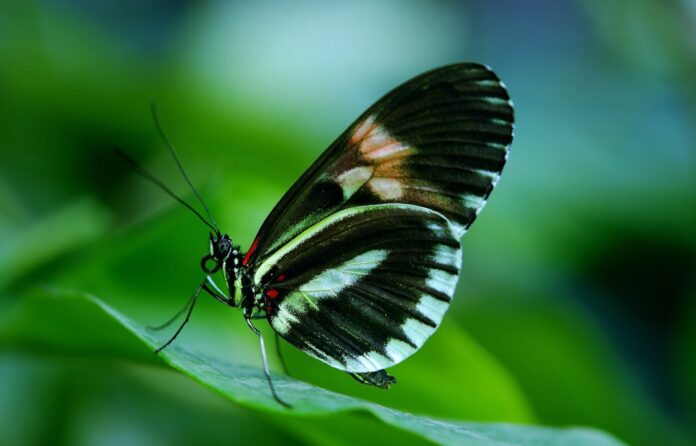Gardening isn’t just a hobby—it’s a full-on adventure. As someone who spends countless hours tending to my little patch of green, I’ve come to love the ups and downs of nurturing plants. There’s nothing like the satisfaction of watching your hard work blossom into something beautiful. But, let’s face it, gardening can also be a battle against pests. And sometimes, you’re left scratching your head, wondering if an insect is a friend or foe.
That’s exactly what happened to me recently. I stumbled upon a photo online that showed a leaf dotted with intricate black shapes. At first glance, I thought it was a disease or some alien invasion! Like many others who saw it, I was a mix of curious and concerned.

After diving into some research, I discovered these weren’t some destructive invaders. They were the eggs of the Mourning Cloak butterfly (also known as Nymphalis Antiopa). If you’ve never heard of it, you’re in for a treat because their life cycle is nothing short of fascinating.
From Egg to Elegant Butterfly
The image I saw showcased a close-up of their eggs, which look like tiny, black works of art, almost like delicate lace. These eggs are laid in clusters, creating a mesmerizing pattern. Initially, I was worried—would these eggs spell doom for my garden? But as it turns out, these butterflies are more of a blessing than a curse.

The Mourning Cloak caterpillars do munch on leaves, but they prefer trees like willows, elms, and poplars over your flowers or vegetables. That’s a relief, right? Even better, the butterflies themselves play an essential role in decomposition by feeding on rotting fruit.
Once the eggs hatch, the caterpillars emerge, decked out in black with tiny white spots and spiky bodies. They grow through several stages, shedding their skins as they go. Eventually, they form a chrysalis, a little cocoon where their transformation takes place. Depending on the weather, this process can take weeks or even months. And when they finally emerge, they are nothing short of breathtaking: velvety dark wings with bright yellow edges and tiny blue spots.

The Butterfly That Defies Winter
What makes the Mourning Cloak truly unique is how it survives the cold. Unlike most butterflies, they hibernate during winter, hiding under loose bark, in woodpiles, or even in forgotten corners of sheds. Come spring, they’re among the first to flutter around, bringing life to the still-sleepy garden.
What to Do If You Spot Them
It’s natural to feel a little protective of your plants when you see caterpillars. But not all of them are out to destroy your garden. The Mourning Cloak butterfly is a perfect example of nature’s balance. If you find their eggs or caterpillars, don’t panic! Consider leaving them be or gently relocating them to a nearby tree or shrub if needed.

Gardening is about more than just plants—it’s about living in harmony with the ecosystem around you. Sometimes, the things we initially fear turn out to be the most fascinating parts of the experience.
A Call to Action for Gardeners Everywhere
The next time you notice something unusual in your garden, take a moment to investigate. Nature is full of surprises, and you might just discover something incredible, like the Mourning Cloak butterfly. Share your findings with friends and encourage them to see the beauty in these tiny wonders. After all, gardening is as much about discovery as it is about growth—and every little surprise makes it worth the journey.




